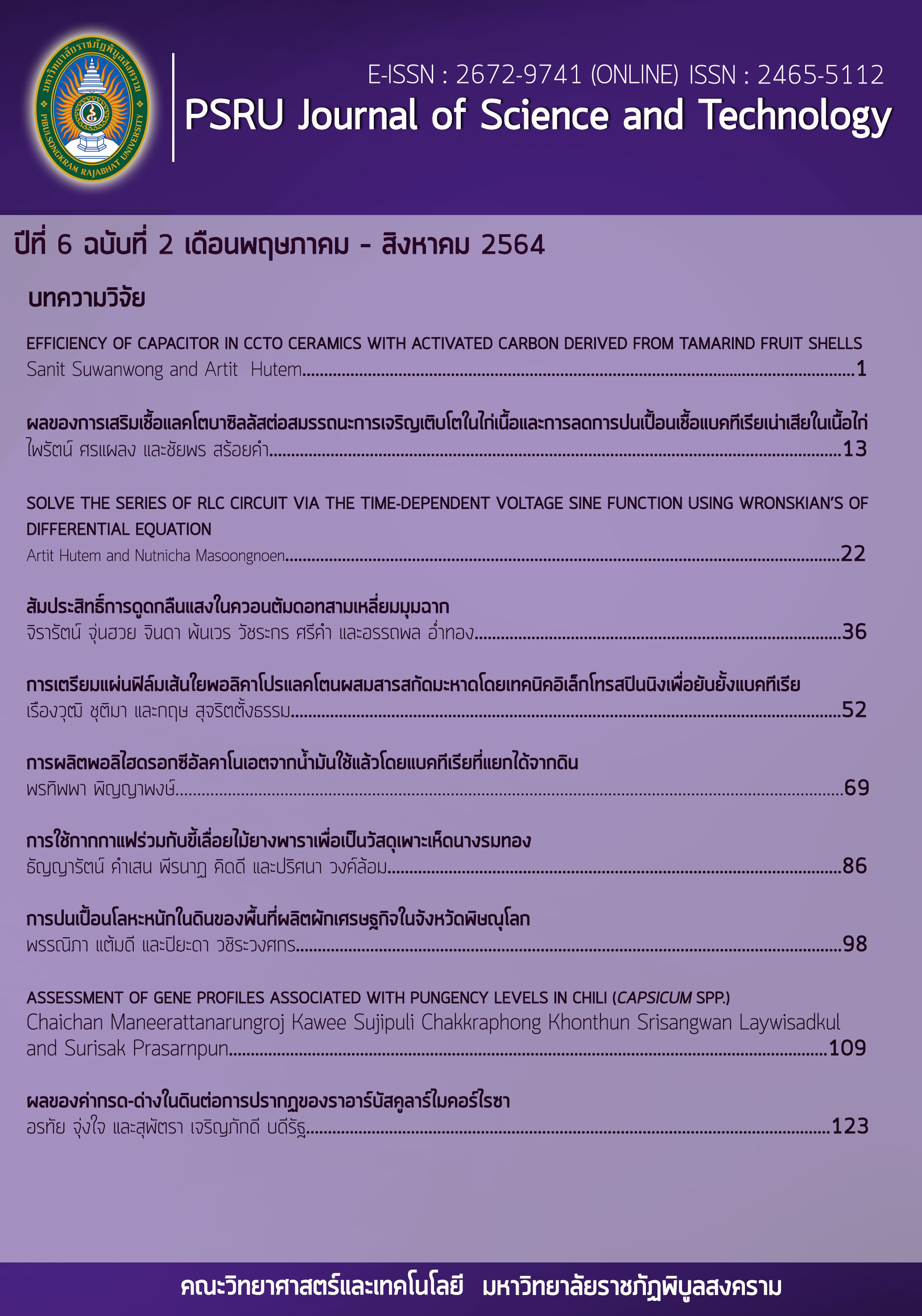SOLVE THE SERIES OF RLC CIRCUIT VIA THE TIME-DEPENDENT VOLTAGE SINE FUNCTION USING WRONSKIAN’S OF DIFFERENTIAL EQUATION
Keywords:
Time-dependent energy static charge, Time-dependent electric charge, Time-dependent voltageAbstract
In this paper, we developed the mathematics and physics of the series of RLC circuits. The purpose of this study is to calculate for finding the time-dependent electric charge and the time-dependent energy static charge that because of time-dependent voltage which in sine function by using the second-order non-homogeneous linear ordinary differential equation and integration by part technique. We find that the charge corresponds to capacitance but inversely proportional to induction. The wave group of the time-dependent energy static charge depends on the ratio between resistance with double inductance and angular frequency parameter.
References
Ahammodullah, H., Md-Abdul, H., & Md. Al-Amin, M. (2019). Application of Linear Differential Equation in an Analysis Transient and Steady Response for Second Order RLC Closed Series Circuit, American Journal of Circuits,Systems and Signal Processing, 5(1), 1-8.
Dino, K. (2019). Negative capacitance or inductive loop-A general assessment of a common low frequency impedance feature, Electrochemistry Communications, 98, 58-62.
Kishore, K.L. (2008). Electronic Circuit Analysis, second edition, New York: BS Publication.
Mohazzab, J., Hussain, A., Muhammad, Q., & Mohsin, S. (2008). RLC Circuit Response and Analysis (Using State Space Method). IJCSNS International of Computer Science and Network Security, 8(4), 48-54.
Nima, S., Amir, H., Hamid, R., & Kumars, R. (2019). Microgrids interconnection to upstream AC grid using a dual-function fault current limiter and power flow controller: principle and test results, IET Energy Syst. Integr., 1(4), 269-275.
Olutimo, A.L., & Omoko, I.D. (2020). Stability and boundedness analysis of a system of RLC circuit with response, International Journal of Applied Mathematics, 33(1), 39-48.
Riley, K.F., & Hobson, M.P. (2006). Mathematical Methods for Physics and Engineering. (3th ed.). New York: Cambridge University Press.
Sokol, P.E., Warren, G., Zheng, B., & Smith, P. (2013). A circuit to demonstrate phase relationships in RLC circuits, Physics Education, 48(3), 312-318.
Sonam, P. (2015). Analyzing the Response of an RLC Circuit. International Journal of Scientific and Research Publications, 5(7), 1-2.
Teoh, A.K., & Rahifa, R. (2018). Comparison of numerical techniques in solving transient analysis of electrical circuits, ARPN Journal of Engineering and Applied Sciences, 13(1), 314-320.
Tikjha, W., Normai, T., Jittburus, U., & Pumila, A. (2018). Periodic with period 4 of a piecewise linear system of differential equations with initial conditions being some points on positive y axis. PSRU Journal of Science and Technology, 3(2), 26-34.
Downloads
Published
How to Cite
Issue
Section
License
กองบรรณาธิการขอสงวนสิทธิ์ในการปรับปรุงแก้ไขตัวอักษรและคำสะกดต่างๆ ที่ไม่ถูกต้อง และต้นฉบับที่ได้รับการตีพิมพ์ในวารสาร PSRU Journal of Science and Technology ถือเป็นกรรมสิทธิ์ของคณะวิทยาศาสตร์และเทคโนโลยี มหาวิทยาลัยราชภัฏพิบูลสงคราม และ
ผลการพิจารณาคัดเลือกบทความตีพิมพ์ในวารสารให้ถือมติของกองบรรณาธิการเป็นที่สิ้นสุด







